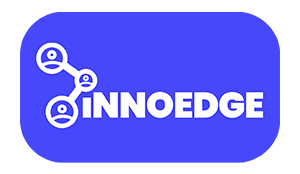The advertising landscape is undergoing a seismic shift as the era of third-party cookies comes to an end. With major browsers like Google Chrome phasing out third-party cookies by 2024, advertisers must adapt to a cookie-less future. This transformation presents both challenges and opportunities for targeted advertising. Here’s how businesses can prepare and thrive in this new environment.
The Decline of Third-Party Cookies
Third-party cookies have long been a cornerstone of digital advertising, enabling personalized ads by tracking user behavior across websites. However, increasing concerns over privacy and data security have led to stringent regulations like GDPR and CCPA, pushing tech giants to phase out these cookies. Google’s decision to eliminate third-party cookies from Chrome by 2024 marks a significant turning point, as Chrome holds a dominant share of the web browser market (Adapt) (Transcend | Data Privacy Infrastructure).
Strategies to Adapt
1. Leverage First-Party Data
With the decline of third-party cookies, first-party data becomes crucial. This data, collected directly from your audience through interactions on your own platforms, is more reliable and privacy-compliant. Companies should focus on building robust first-party data strategies by:
- Enhancing Customer Interactions: Encourage customers to share their information through value exchanges like personalized experiences, exclusive content, and loyalty programs.
- Utilizing CRM Systems: Implement advanced CRM platforms to manage and analyze first-party data effectively, ensuring comprehensive customer insights (Adapt) (Transcend | Data Privacy Infrastructure).
2. Invest in Consent Management Platforms (CMPs)
A Consent Management Platform (CMP) helps manage user permissions and data preferences, ensuring compliance with privacy regulations. CMPs facilitate the ethical collection of first-party and zero-party data (information that users willingly provide). Implementing a CMP can enhance targeting precision and build user trust by transparently handling data preferences (Transcend | Data Privacy Infrastructure).
3. Adopt Contextual Advertising
Contextual advertising targets users based on the content they are currently viewing rather than their past behavior. This method respects privacy while still delivering relevant ads. By leveraging AI and machine learning, advertisers can effectively analyze page content and match ads to the context, maintaining relevance without relying on personal data (Transcend | Data Privacy Infrastructure).
4. Utilize Privacy-Preserving Technologies
Technologies like Google’s Privacy Sandbox aim to deliver targeted advertising while preserving user privacy. These tools aggregate user data and anonymize it, reducing the risk of identifying individuals. Staying updated with and adopting these privacy-preserving technologies can help maintain effective ad targeting in a compliant manner (Adapt).
5. Forge Strategic Partnerships
Collaboration will be key in the cookie-less future. Forming partnerships with publishers, tech providers, and other stakeholders can help develop innovative solutions for data collection and ad targeting. Joint efforts can lead to the creation of new industry standards and technologies that uphold privacy while enabling effective marketing (Adapt).
Implications for Targeted Advertising
The shift away from third-party cookies fundamentally changes the mechanics of targeted advertising. Marketers will need to:
- Reevaluate Metrics and KPIs: Traditional performance metrics might not be applicable in the new landscape. Companies should develop new metrics that reflect the effectiveness of privacy-centric strategies.
- Increase Focus on Content Quality: High-quality, relevant content will become even more important in capturing audience attention and driving engagement without relying on intrusive tracking.
- Enhance Transparency: Being transparent about data usage and respecting user preferences can enhance trust and loyalty, leading to better long-term customer relationships (Adapt) (Transcend | Data Privacy Infrastructure).
Key Takeaways
- First-Party Data is Critical: Develop strategies to collect and utilize first-party data for more reliable and compliant marketing.
- Implement CMPs: Use consent management platforms to handle user data ethically and stay compliant with privacy regulations.
- Embrace Contextual Advertising: Shift to contextual targeting to maintain relevance without relying on personal data.
- Adopt New Technologies: Leverage privacy-preserving technologies to continue effective ad targeting.
- Collaborate for Innovation: Forge partnerships to develop new standards and solutions for the cookie-less future.
The transition to a cookie-less world is not just a challenge but an opportunity to innovate and build more trusted, privacy-centric relationships with customers. By adopting these strategies, businesses can navigate this shift successfully and continue to thrive in the evolving digital advertising landscape.



